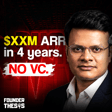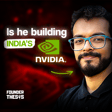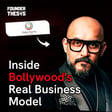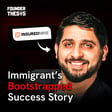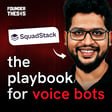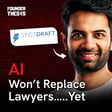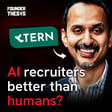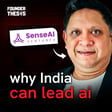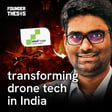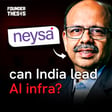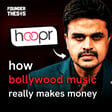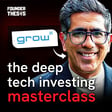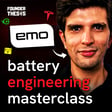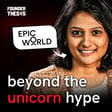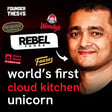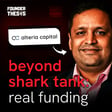
From Coffee Trader To $250M+ VC | Manav Garg (Together Fund)
"SaaS as we know it is DEAD."
This might sound controversial, but as Manav Garg explains, the old model of simple workflow automation is being rapidly superseded. AI agents are now capable of executing complex tasks based on simple commands, fundamentally changing how businesses operate and what they expect from technology.
Manav Garg is the Co-founder and Managing Partner of Together Fund, an operator-led VC firm managing over $250M AUM and backing ambitious early-stage Indian SaaS and AI startups. Before this, he founded Eka Software Solutions in 2004, building it over nearly two decades into a global leader in commodity management software. He scaled Eka to $34 million in revenue with $9 million in profit by 2014, raised over $55 million, navigated a complex pivot to the cloud, and ultimately exited the company. He is also a co-founder of SaaSBOOMi, Asia's largest SaaS community, and is passionate about building India as a Product Nation.
Key Insights from the Conversation:
👉The challenging journey of pivoting an already profitable company (Eka) to the cloud.
👉Learnings from bootstrapping, fundraising, M&A, and scaling enterprise SaaS globally.
👉The Operator-VC model: "Paying it forward" with capital plus know-how.
👉Why "People Buy From People": Building trust is paramount in enterprise sales.
👉The Founder Exit journey often involves an identity crisis, not just financial calculations.
Chapters:
00:00:00 - Introduction
00:03:32 - Early Career: Commodity Trading & Learning Lateral Thinking
00:10:50 - Spotting the Gap: The Founding Idea for Eka Software
00:19:29 - Starting Eka: Solo Founder, Seed Funding & Early Choices
00:25:33 - Zero-to-One: Building Eka Profitably From Year 1
00:34:20 - Scaling Up: Raising VC & Growing Through M&A ($34mn ARR)
00:40:55 - Facing Crisis: The Commodity Crash & The Cloud Pivot Decision
00:48:58 - Navigating the Difficult 3-Year Cloud Transition
00:53:07 - The Exit Journey: Deciding to Sell Eka & The Process
01:05:04 - SaaSBOOMi & Founding Together Fund (The Operator-VC Model)
01:10:09 - Investing Thesis: AI Wave, Market Size & Evaluating Founders
01:19:34 - Key Lessons from 20 Years: Pricing, Sales, Product Love & Processes
01:33:11 - Why SaaS is Dead & The Future with AI Agents
#FounderThesis #SaaS #StartupIndia #IndianStartups #VentureCapital #OperatorVC #AI #ArtificialIntelligence #EnterpriseSoftware #CloudComputing #FounderJourney #StartupExit #Entrepreneurship #Bootstrapping #SalesStrategy #ProductManagement #TechIndia #MakeInIndia
Disclaimer: The views expressed are those of the speaker, not necessarily the channel.
